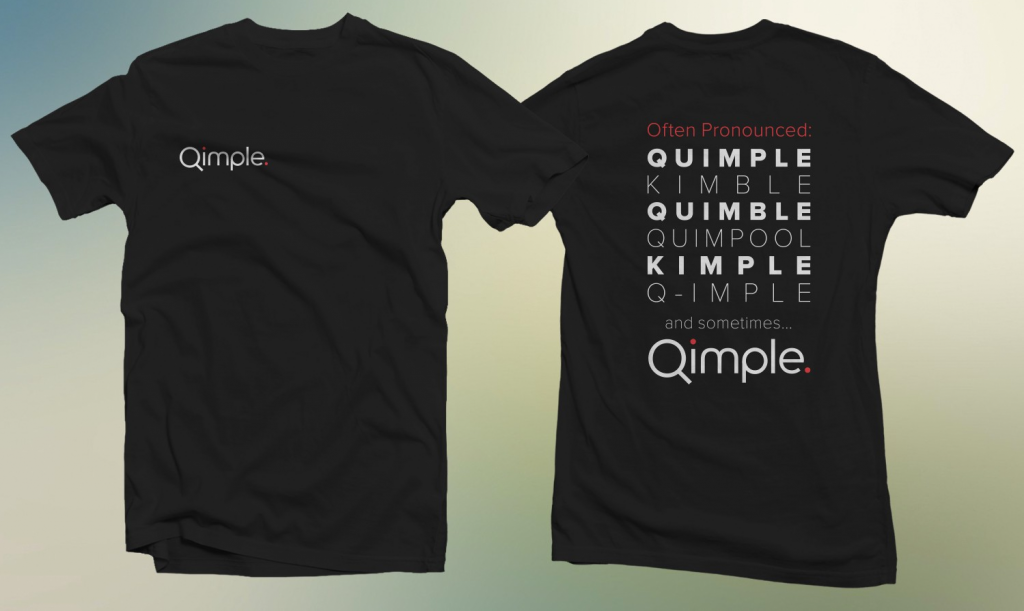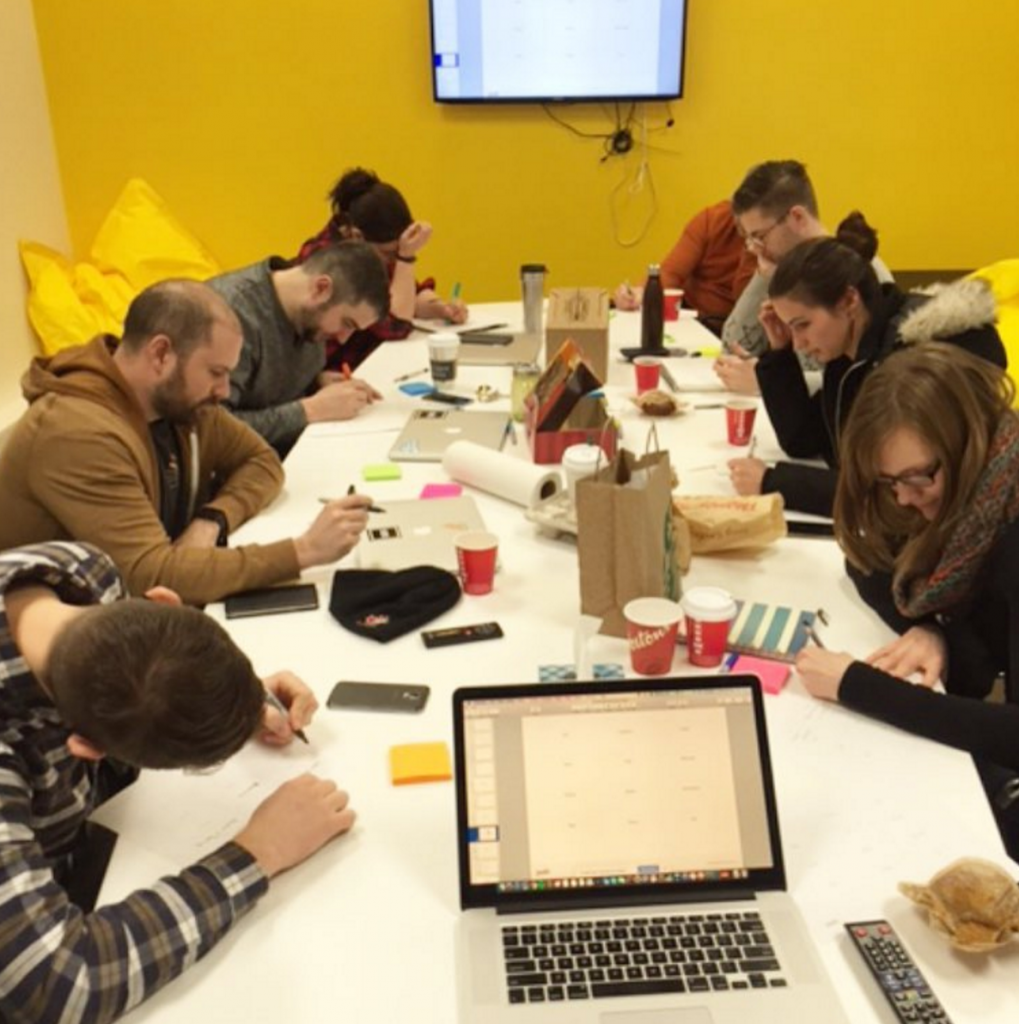If you find this blog post, it means I will no longer be the CEO of Qimple… instead, as of September 26, I find myself CEO of Alongside, our newly rebranded company.
So far, the feedback has been amazing, but I had a lot of people ask me why we rebranded and what went into the process of making the change. So I decided to do a recap of why and how we did it.
The decision to rebrand was an easy one. Let me explain: Quimple, Qimble, Kimple, Pimple, Dimple, Quimpool, Quipel, Kimble, Q-imple, and the list goes on.

I dreaded networking because I knew every new conversation would start with clarifying the pronunciation and the meaning of the name.
But it goes beyond the issue of phonetics, misspelling, and mispronunciation; the brand name did not represent who we were as a company. It was not a brand that unified our team. A company’s brand name is something a CEO should represent with confidence and excitement, but I couldn’t even hide my disdain for it. I dreaded networking because I knew every new conversation would start with clarifying the pronunciation and the meaning of the name (it stood for “quick and simple” — mystery solved!).
It was clearly time for change.
We killed it with fire, so now what?
In case you’re not familiar with what we do, we’re in HRTech, a space that many consider crowded, even though we’ve been carving a place for ourselves. Our challenge was coming up with a new name that encompassed both something that represented the values of our company and wasn’t a ‘JobThis’, ‘CareerThat’. We wanted a name that was synonymous with what we stood for.
The other challenge was timing. Originally, we planned to get it done before the end of 500 Startups in Q2 2015, but it just didn’t make sense since we had just launched the product and needed to focus on our growth efforts. We tried again after 500 Startups, but we were in full fundraising mode at the time and rebranding didn’t make a lot of sense.
We had small windows of opportunity, here and there, where we tabled it again with mixed results at best (Top Crust? Lonely Sock? Hand & Glove? Murmurate?). We just couldn’t catch lightning in a bottle, so we decided to put it on the back burner.
Figuring out our “why”
We enlisted Pauly Ting to help us make sense of it all and come up with a name that fits us perfectly. Pauly spent a week with us and we went back to the drawing board to figure out why we do what we do. What was meant to be a rebranding exercise became the best possible team building exercise any CEO could ask for.
We outlined what we stood for and why we come to work every day. As each individual expressed themselves, the word that came out most often was ‘together’. The common thread between every single member of our team was how much empathy we have towards our fellow human being.

Even though we didn’t pinpoint our new company name by the end of the week, we felt confident that we were on the right track. Coming up with a new name became an obsession amongst our team, but we never really got there on our own. So we decided that we had sufficient direction and background to try an external agency. We enlisted Rob Meyerson from Heirloom, who had an impressive naming background for some of the biggest brands in the world. My creative crew, Emily and Skylar, had met Rob at a marketing event in San Francisco.
Rob and his team gave us a few options that we considered in our short list, one being ‘Goby‘, which we thought could be interesting until we found out it was a fish that led blind shrimps – a noble cause, but not one that represented us.
There was something warm and fuzzy about the name, but Alongside would require a strong story and a brand to convey what it stood for.
One name that was always in contention was ‘Alongside’. There was something that felt and fuzzy about the name and there was never any real resistance towards it. The only drawback was that it didn’t feel like a strong name, it was a name that would require a strong story and a brand to convey what it stood for. After verifying trademark potential, domain options, and SEO requirements, we collectively agreed that… we were now Alongside.
We have a name! Now we need a pretty logo!
The next step was creating the branding elements. Emily created a strong vision and mission statement, so now we needed a brand identity. Skylar had a full plate of things to do, and so the game plan was to hire an external designer to see if he or she could create our new logo.
We hired two designers with exceptional portfolios from Dribbble, but the first series of proposed options were less than impressive. A week later they sent us a second series of options — they were better, but one design in particular stood out. Unbeknownst to the rest of us, it was a design that Skylar had done while on vacation and had snuck in the presentation. Skylar had perfectly captured what our brand represented, and it was unanimously voted as our new brand identity.

Lessons learned:
I’d like to think that we executed this as flawlessly as possible in order for it to be a “flip a switch” situation, but it came with a lot of preparation. Here are a few tips if you plan on rebranding (or even creating your first brand, for that matter):
1. Assess the risk and available resources. It’s inevitable; rebranding will be a distraction for your team and will impact the availability of your resources.
2. Identify the best time window to get this done. Set a date and work backwards from it.
3. List every possible item that could be affected and estimate the amount of time required to complete them. You can see our list here to give you an idea of what went into it: Qimple Rebrand Tasks List
4. Create a detailed budget for said items.
5. Make sure you have your customer personas well-defined, as well as a clear mission and vision statement for the company. It’s the only way you’ll know which options feel right.
6. Set parameters (“stay away from”, “must be trademark-able”, “available domains”). A “.com” domain may or may not be a must. This is something you identify once you have a better understanding of who your customers are.
7. Get your whole team’s input, but identify key members for key decisions.
8. If you can’t catch lightning in the bottle, get external help. Keeping your team up at night to contribute to name ideas is not time and money well spent.
9. Even if designers on Dribbble have great portfolios it doesn’t mean they were the creative brains behind the designs. Ask for a breakdown of their creative process before engaging them.
10. Names are not love at first sight and not everyone on your team will agree. Don’t make rash decisions, let it grow on you.
11. Check for questionable Urban Dictionary descriptions. 🙂
I am now the CEO of Alongside. It represents our desire to be working “alongside” employers and job seekers so they can connect in a meaningful way. We want them to discover the magic that happens when you surround yourself with incredibly talented and dedicated individuals.


